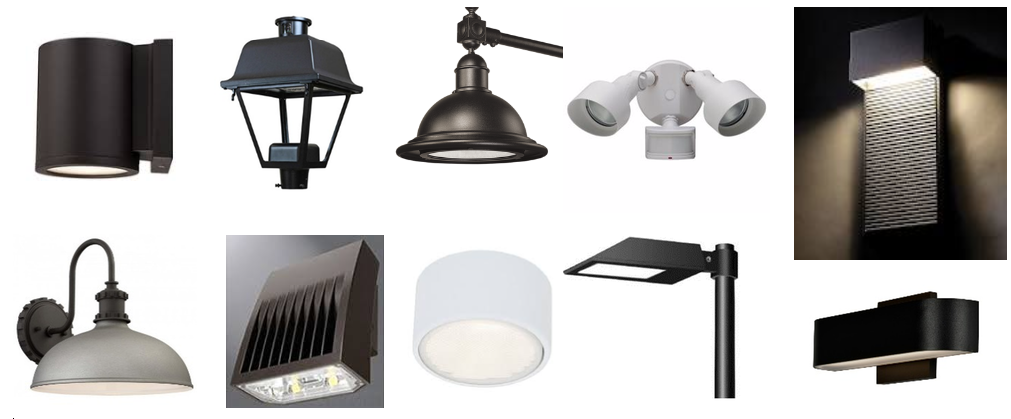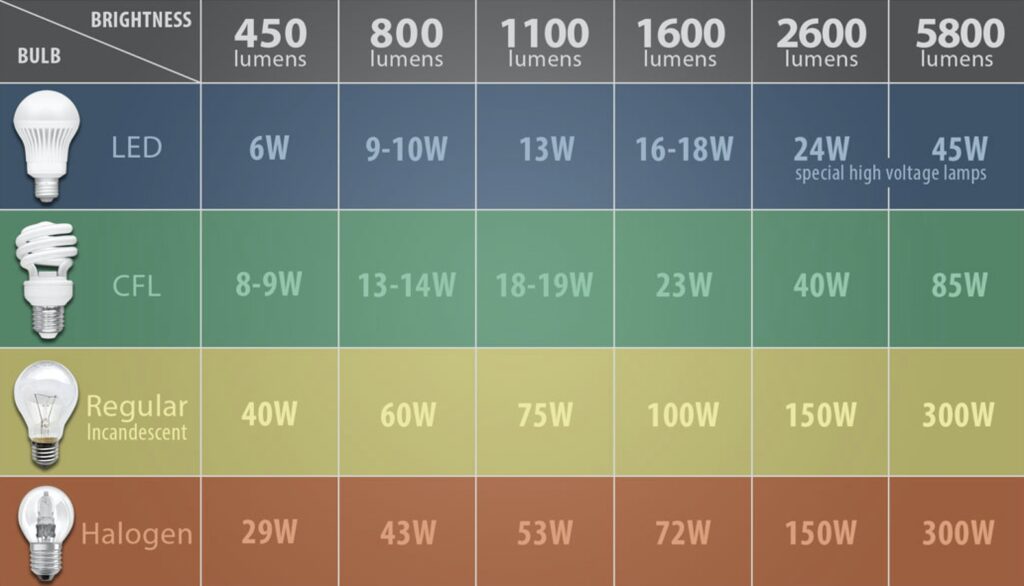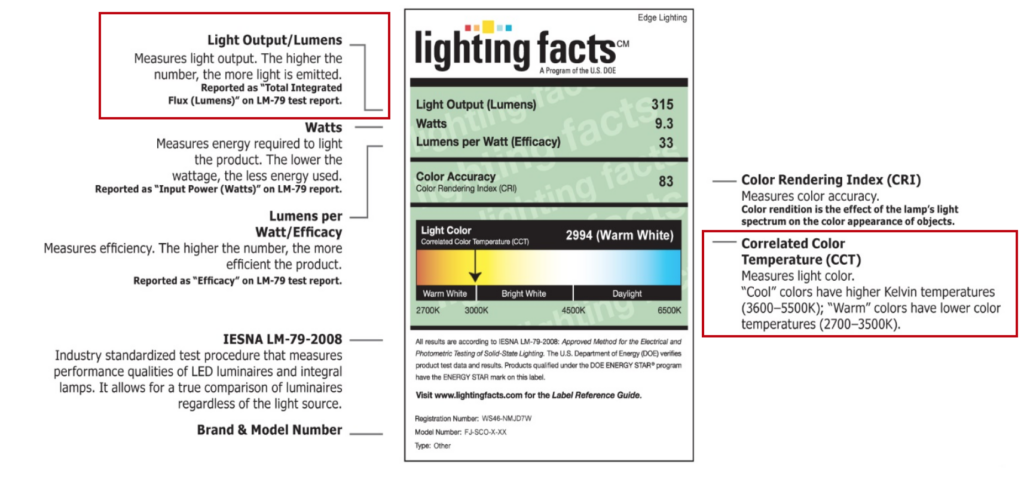Ojai Valley Dark Sky Ordinance FAQs
General – Where does this Ordinance Apply?
Q1: Why did the County create a dark sky ordinance for the Ojai Valley?
The Board of Supervisors directed Planning Division staff to develop a dark sky ordinance for the Ojai Valley area. The Board assigned this task because poorly placed, excessive, or unshielded outdoor lighting can have negative impacts on cumulative light pollution, human health and wildlife, and enjoyment of the nighttime sky. The intent of the Board adopted ordinance is to provide safe yet appropriate levels of outdoor lighting that allows for views of the night sky. The ordinance went into effect on November 1, 2018.
Q2: What is the focus of the dark sky ordinance?
The goal of the ordinance is to allow property owners a reasonable amount of nighttime light using standards. The ordinance requires that fixtures are pointed downward, and that bulbs/lamps are fully shielded and turned off during “dark hours”. These simple fixes avoid glare and light spilling over property lines and into the sky and ensure that light is focused and used where and when it is needed. The lighting is generally limited to a color temperature of 3,000 Kelvin and a maximum lighting intensity output of 850 lumens, which is healthier for the environment and for people.
Q3: What is an overlay zone?
An overlay zone is a set of additional regulations that apply to a property within it. This overlay zone is added to the base zone (such as Agricultural, Open Space, Residential, Commercial Planned Development, etc.) but does not change or have any effect on the provisions of the base zone.
Q4: Where would this ordinance apply?
The ordinance is applicable within the Ojai Valley Municipal Advisory Council (MAC) area within the unincorporated County, which includes the communities of Mira Monte, Casitas Springs, Meiners Oaks, and Oak View.
To find out if your property lies within this overlay zone, please visit the “What’s my Zoning” tab on the County’s Planning website here and enter your Assessor’s Parcel Number. If you see a suffix at the end of your zoning called “DKS,” it means that your property lies within the Dark Sky overlay zone.
Q5: What cities or jurisdictions in the neighboring vicinity have adopted ordinances that address exterior lighting?
Although not all of them are called “dark sky” ordinances, the following jurisdictions in and around Ventura County include standards in their zoning ordinances or have guidelines which address exterior lighting to achieve similar goals – e.g., cities of Ojai, Malibu, Santa Barbara, Goleta; and the counties of Kern, Los Angeles, to name a few.
Q6: Does the ordinance address indoor lighting?
No. The ordinance does not generally regulate indoor lighting. It does, however, include standards for night lighting for agricultural operations within new and retrofitted transparent or translucent structures (mainly greenhouses). See the Non-Coastal Zoning Ordinance Section 8109-4.7.4(k) for details.
Q7: Does the dark sky ordinance address streetlights?
No. Streetlights are not addressed by this ordinance because the construction and maintenance of public roads and other improvements within road rights-of-way are not governed by the Non-Coastal Zoning Ordinance. The road rights-of-way in the county are regulated by the Public Works Agency Transportation Department.
Understanding the Lighting Terminology
Q8: What do you mean by a fully-shielded light fixture?
Q9: How bright is 850 lumens?
Q10: When I go to a store to buy lighting, will I be able to tell if the lights are within permissible levels (i.e., 850 lumens and 3000 Kelvin)?
Ordinance Requirements
Q11: What are dark hours?
Dark hours refer to the time when lights which are not essential must be turned off. These hours start from 10:00 p.m., or when people are no longer present in exterior areas, or at the close of business hours, whichever is latest. Dark hours continue until sunrise. Lighting which is necessary for safety or security purposes (including porch lights, or lighting for walkways and driveways, etc.) may be kept on during dark hours.
Q12: I need lighting for security. Will it be allowed and what are the restrictions?
Security lighting is classified as “essential lighting” in this ordinance. This kind of lighting can remain on at all times, and is not subject to the dark hours requirement. Parking lot lights and security lights for businesses may remain, as specified in their approved permit. Existing security lighting can remain on, even if it does not conform to these standards.
Newly installed security lighting must be fully shielded, directed downward, and is allowed a maximum light output of 2,600 lumens. When the light output is over 850 lumens, the security light must be on motion sensors that will automatically shut the light off within 10 minutes after activation. There are a couple of exceptions for security lighting as well.
(a) If you have an agricultural use in the Agricultural Exclusive (AE), Rural Agricultural (RA), or Open Space (OS) zones, your security lights may have a maximum light output of 2,600 lumens and does not need to be on a motion sensor.
(b) If you use a security camera with your security light, the lighting color may be cooler (i.e., more than 3,000 Kelvin), to the minimum necessary for the effective working of the camera.
Specific details regarding new security lighting are found in the Non-Coastal Zoning Ordinance Sec. 8109-4.7.4(e).
Q13: Are there any lights which are prohibited within the overlay zone?
The following types of lights will no longer be permitted within the overlay zone:
a) Lights located along the perimeter of a lot, except those used for security/safety purposes that comply with all other applicable standards and requirements; and,
b) Permanently installed lights that blink, flash, rotate, have intermittent fading or strobe light illumination.
If you have these lights already installed on your property, they will be required to be discontinued beginning November 1, 2019.
For Homeowners / Residential Uses
Q14: What kind of lights can remain on after 10:00 p.m.?
The ordinance makes an exception for the following new lighting fixtures that can remain on from 10:00 p.m. to sunrise:
a) Porch/under-eave lights, as long as they are a maximum 850 lumens, directed downward, and partially shielded.
b) Security lighting, as long as they are no more than 2,600 lumens, directed downward, fully shielded, and controlled by a motion sensor that turns the light off after a maximum of 10 minutes.
c) Walkway and driveway lighting, as long as the fixtures are no more than 2 feet in height, no more than 850 lumens, directed downward, and are fully shielded.
d) Solar lights or other low-level lighting that emits a maximum output of 60 lumens.
Existing lighting for porches, security, walkway, and driveway lighting that do not conform to the standards above can remain on at all times.
Q15: I am doing a remodel that includes an addition to my house. How does the ordinance affect the lighting on my property?
Any outdoor light fixtures that are newly installed or replaced during your project will be required to be brought into compliance as part of your approved building permit.
Q16: My family puts holiday lights up every year. Will we still be able to do this?
Yes. Seasonal and festive lighting, like string lights and other lit decorations, are typically temporary in nature and are subject to the requirements of this ordinance.
Q17: I have market lights/string lights/LED rope lights in my backyard. Can I retain them?
Yes, string lights and marker lights can be retained. In places where these are hung, the lights should be switched off after 10:00 p.m. or when people are no longer present in the area, whichever is later. However, if these lights are 60 lumens or less, these can remain on at all times. All other outdoor lighting must comply with the requirements of the Dark Sky Ordinance.
Q18: What are the restrictions on lighting for landscaped areas and hardscape on my residential property?
The following regulations apply to lighting for landscapes or hardscapes:
• Lighting shall be fully shielded and directed downward.
• Landscape lighting can have a maximum output of 850 lumens and a color-correlated temperature of 3,000 Kelvin.
• Lighting which is not essential – such as uplighting of landscaping or aesthetic features, shall be turned off after 10:00 p.m. or after people are no longer present in those areas, whichever is later.
• Walkway or driveway lighting is allowed within landscaped or hardscaped areas after 10:00 p.m. The light fixtures shall be no more than 2 feet in height.
• Solar or other low-level lights with a maximum output of 60 lumens are not subject to the ordinance and may remain on after 10:00 p.m.
Q19: I have a tennis court/swimming pool in my backyard. Can I light it?
Yes, outdoor recreational facilities such as tennis courts, basketball courts, etc., can be lit. New lighting system design shall be prepared by a certified professional such as a lighting engineer, architect, etc., who can interpret and consider lighting levels for the facility as recommended in the Lighting Handbook prepared by the Illuminating Engineering Society of North America. Specific standards and height limitations for such lighting are included in the Non-Coastal Zoning Ordinance Section 8109-4.7.4.
Swimming pools are not considered outdoor recreational facilities. Pools and existing lighting around the pool area (such as hardscape lighting around swimming pools or spas or security lighting) are required to follow the standards included in the Non-Coastal Zoning Ordinance Section 8109-4.7.4.
Commercial & Industrial Businesses
Q20: I have a commercial or industrial business within the MAC area. What do I have to do to comply with the Dark Sky Ordinance?
The ordinance requires that beginning November 1, 2019, all existing lighting fixtures within commercial or industrial businesses on commercial or industrial-zoned sites which do not conform with the new standards (such as unshielded or overly bright lighting) may be retained but shall be –
a) Turned off after 10:00 p.m. or close of business hours, whichever is latest. If it is classified as essential lighting (i.e., for security purposes), it may remain on after 10:00 p.m. and
b) Fixtures that have adjustable mountings shall be pointed downward to eliminate glare and avoid light trespass onto adjacent properties.
This requirement also applies to existing lighting, which is now prohibited (listed in Q13 above).
Outdoor lighting within commercial and industrial sites which does conform to the new lighting regulations should also be turned off after 10:00 p.m. or close of business hours, whichever is latest, unless it is classified as essential lighting (i.e., for security or safety purposes). In that case, the security lighting may remain on after 10:00 p.m., but it must be on motion sensors if the lighting is over 850 lumens.
Outdoor lighting within commercial and industrial sites which have a Conditional Use Permit or Planned Development Permit issued by the County would be subject to requirements based on the permit. See Q26 below for what you need to do if you have a permitted commercial or industrial site.
Q21: I want to hire a lighting designer to create a special lighting plan for my commercial project that doesn’t match the ordinance standards. Can I do that?
The ordinance allows for a review process by the Planning Director where an applicant can request a deviation from the standards and requirements under special circumstances, as long as findings can be made (See the Non-Coastal Zoning Ordinance Section 8109-4.7.6). For example, the proposed lighting is required to meet the functional equivalent of the ordinance standards. i.e., the proposed standards for the strength and duration of the illumination, glare and amount of light trespass shall be designed to achieve the same result as lighting consistent with the ordinance would.
Q22: I have a property with tenant spaces that I rent out. If one of my spaces changes tenants, how does the ordinance affect my property?
The outdoor lighting that the tenant controls, if any, must be brought into compliance when tenant improvements are completed. This would occur when getting a Zoning Clearance from the Planning Division and a permit from the Building & Safety Division for tenant improvements. Any other outdoor lighting would be brought into compliance as the property owner changes fixtures or, in some cases, through conditions of project approval when an applicant applies for a modification to an existing Conditional Use Permit or Planned Development Permit for the business.
Existing Lighting
Q23: What do landowners have to do now if their property is located within the Dark Sky overlay zone?
Currently, no replacement lighting is necessary. All existing outdoor lighting which is already permitted can remain as is. However, certain requirements apply to this existing lighting unless it is exempt. These requirements are listed in Q24 below.
When landowners in the residential, agricultural, or open space zones decide to develop their property and add new outdoor lighting fixtures or replace existing lighting fixtures, the new lighting must conform to the new regulations.
Commercial business and industrial landowners have until November 1, 2021, to ensure their outdoor lighting complies with the new regulations unless they have a Conditional Use Permit or Planned Development Permit issued by the County for their business. See Q25 and Q26 for specifics on what needs to be done after November 1, 2021, based on whether the landowners have a permit for their business.
Q24: Will I have to replace or change my existing lights?
There is no requirement to change existing lights on sites which have residential, agricultural, or open space uses. The ordinance requires that existing lighting fixtures which do not conform with the new standards (such as unshielded or overly bright lighting) on these sites or in these zones may be retained but shall be –
a) Turned off after dark hours if they are not classified as essential lighting (i.e., used for security purposes); and,
b) Fixtures that have adjustable mountings shall be pointed downward to eliminate glare and avoid light trespass onto adjacent properties.
This requirement also applies to existing lighting, which is now prohibited (listed in Q13 above).
Q25: I do not have a planning permit for my commercial or industrial building. Can I retain my current outdoor lighting?
Commercial and industrial businesses in commercial and industrial-zoned sites which do not have an active discretionary permit are provided with a three-year grace period to bring their existing lighting into compliance. After November 1, 2021, business owners would have three options:
a) Replace or modify the lighting to conform to the new standards;
b) Apply to the Planning Division for a time extension due to hardship reasons or
c) Turn the lights off after 10:00 p.m. or at the close of the business, whichever is later (including security lighting).
If the business owner applies for a time extension, Planning staff will evaluate the circumstances and determine a compliance schedule on a case-by-case basis, which will be authorized by the Planning Director.
Compliance and Enforcement
Q26: I have a Conditional Use Permit or Planned Development Permit for my business or structure with outdoor lighting. When will I be required to conform to the new regulations?
At the time when a business owner applies for a minor or major modification to the underlying permit, all outdoor lighting will be required to conform to the new standards outlined in Non-Coastal Zoning Ordinance Section 8109-4.7.4. To clarify, these modifications would include anything more than the level of a Permit Adjustment, such as when more than 10% in floor area is added to a building or time extensions to the permit are approved. Compliance with the new lighting regulations may be phased in within a reasonable time period after November 1, 2021.
Q27: My neighbors leave their exterior lights on past 10:00 p.m. when nobody is home. How do I get them to turn their lights off?
First, check to see if the lighting is exempt from the Dark Sky regulations (See the Non-Coastal Zoning Ordinance Sec. 8109-4.7.5). The County encourages residents to first contact the neighbor whose exterior lights remain on past 10:00 p.m. Neighbors may not be aware of the ordinance, and this initial communication may be enough to resolve the issue. During this initial communication, it may help to direct the neighbor to the County’s Dark Sky Ordinance website. If these attempts do not resolve the issue, residents may fill out a complaint form and submit it to the County’s Code Compliance Division.
Q28: How do I report a violation?
Residents and business owners may report a violation to the County’s Code Compliance Division here.




